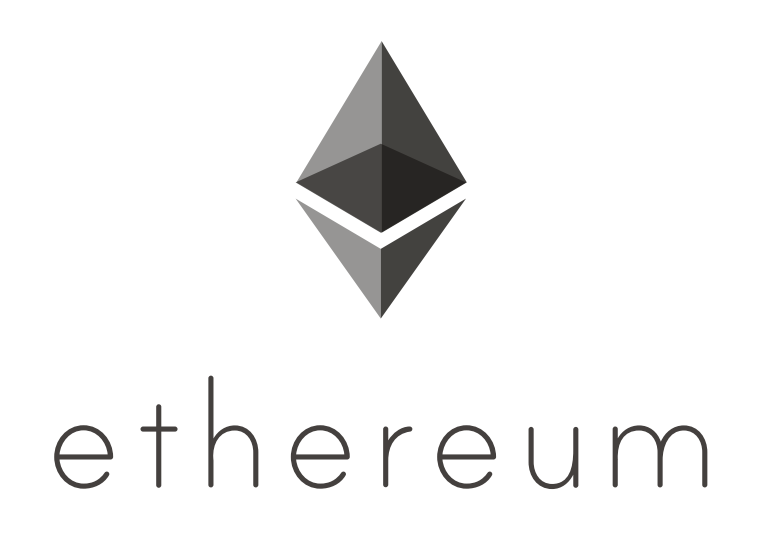EthereumでDApps開発のための開発環境を構築する(Ethereumで別アカウントに送金まで)

以前、IPFS を調査したことがあり、そこから Ethereum の存在を知りました。
昨年頃から本格的に日本でも名前が売れてきて、日本語のソースも増えてきたこともあるので、これを機にサンプルでも作成しようかと思いました。
今回はDApps開発のための下準備までを纏めます。
環境情報
今回、私は以下の環境にて構築を行いました
- Mac Book Pro
- OS: High Seria 10.13.2
- Homebrew
- 1.5.6
Etehreumのセットアップ
今回は Ethereum を使用します。理由としては、DApps開発のためのOSSとして開発が積極的に行われており、 様々なDAppsにて使用されている(らしい)からです。
Ethereumのインストール
Homebrewがあれば簡単にインストールができます。
- リポジトリを追加
brew tap ethereum/ethereum- Ethereum をインストール
brew install ethereum- バージョンを確認
geth -h
> NAME:
> geth - the go-ethereum command line interface
>
> Copyright 2013-2017 The go-ethereum Authors
>
> USAGE:
> geth [options] command [command options] [arguments...]
>
> VERSION:
> 1.8.1-stable
(以下略)1.8.1 がインストールされているようですね。
以降の作業は以下のディレクトリにて実施します。(誤解を招かないように念のため)
pwd
> /Users/xxxxxx/workspace/eth_private_net設定ファイルの作成
Ethereum の 1.6から puppeth コマンドが追加されました。
これを使って初期化を行います。
puppethすると以下のようなメッセージが出てくるので、とりあえずネットワーク名を任意の名前にします。
今回は soudegesu にしました。
+-----------------------------------------------------------+
| Welcome to puppeth, your Ethereum private network manager |
| |
| This tool lets you create a new Ethereum network down to |
| the genesis block, bootnodes, miners and ethstats servers |
| without the hassle that it would normally entail. |
| |
| Puppeth uses SSH to dial in to remote servers, and builds |
| its network components out of Docker containers using the |
| docker-compose toolset. |
+-----------------------------------------------------------+
Please specify a network name to administer (no spaces, please)
> soudegesu以降も対話形式で入力していきます。まず、 2. Configure new genesis を選択します。
Sweet, you can set this via --network=soudegesu next time!
INFO [03-05|14:24:17] Administering Ethereum network name=soudegesu
WARN [03-05|14:24:17] No previous configurations found path=/Users/xxxxxxxxx/.puppeth/soudegesu
What would you like to do? (default = stats)
1. Show network stats
2. Configure new genesis
3. Track new remote server
4. Deploy network components
> 2次にコンセンサスルールを決めます。今回は Ethash にしましょう。
Which consensus engine to use? (default = clique)
1. Ethash - proof-of-work
2. Clique - proof-of-authority
> 1次はとりあえずデフォルトにしておきます。
Which accounts are allowed to seal? (mandatory at least one)
> 0x次に使用するネットワークIDを指定します。
適当に 4224 にします。
Specify your chain/network ID if you want an explicit one (default = random)
> 4224なお、代表的なnetwork idは以下のようになっています。 今回はローカル環境で動かすだけですが、重複しないようにしておきましょう。
1: Mainnet2: Morden test net(obsolete)3: Ropsten test net4: Rinkeby test net42: Kovan test net
次にgenesisの設定管理を選択します。
What would you like to do? (default = stats)
1. Show network stats
2. Manage existing genesis
3. Track new remote server
4. Deploy network components
> 2genesisの設定をエクスポートします。
1. Modify existing fork rules
2. Export genesis configuration
3. Remove genesis configuration
> 2次はデフォルトでOK
Which file to save the genesis into? (default = soudegesu.json)
>ココまで来ると Exported existing genesis block と表示され、コンソール上の表示が最初に戻ります。
Ctrl + C にてexitしましょう。
soudegesu.json が作成されていることが確認できます。
1cat soudegesu.json
2
3{
4 "config": {
5 "chainId": 4224,
6 "homesteadBlock": 1,
7 "eip150Block": 2,
8 "eip150Hash": "0x0000000000000000000000000000000000000000000000000000000000000000",
9 "eip155Block": 3,
10 "eip158Block": 3,
11 "byzantiumBlock": 4,
12 "ethash": {}
13 },
14 "nonce": "0x0",
15 "timestamp": "0x5a9cd72a",
16 "extraData": "0x0000000000000000000000000000000000000000000000000000000000000000",
17 "gasLimit": "0x47b760",
18 "difficulty": "0x80000",
19 "mixHash": "0x0000000000000000000000000000000000000000000000000000000000000000",
20 "coinbase": "0x0000000000000000000000000000000000000000",
21 "alloc": {
22 "0000000000000000000000000000000000000000": {
23 "balance": "0x1"
24 },
25 (以下略)プライベートネットワークの初期化
次にネットワークの初期化を行います。
geth --datadir ./private init ./soudegesu.json
INFO [03-05|14:54:31] Maximum peer count ETH=25 LES=0 total=25
INFO [03-05|14:54:31] Allocated cache and file handles database=/Users/xxxxxx/workspace/eth_private_net/private/geth/chaindata cache=16 handles=16
INFO [03-05|14:54:31] Writing custom genesis block
INFO [03-05|14:54:31] Persisted trie from memory database nodes=354 size=65.02kB time=1.10945ms gcnodes=0 gcsize=0.00B gctime=0s livenodes=1 livesize=0.00B
INFO [03-05|14:54:31] Successfully wrote genesis state database=chaindata hash=25e489…52b7d1
INFO [03-05|14:54:31] Allocated cache and file handles database=/Users/xxxxxx/workspace/eth_private_net/private/geth/lightchaindata cache=16 handles=16
INFO [03-05|14:54:31] Writing custom genesis block
INFO [03-05|14:54:31] Persisted trie from memory database nodes=354 size=65.02kB time=1.327455ms gcnodes=0 gcsize=0.00B gctime=0s livenodes=1 livesize=0.00B
INFO [03-05|14:54:31] Successfully wrote genesis state database=lightchaindata hash=25e489…52b7d1アカウントの作成
ether(wei) をやりとりするためのアカウントを作成します。
geth --datadir . account new適当にパスワードを設定すると Address のところにアカウントのアドレスが表示されます。
Your new account is locked with a password. Please give a password. Do not forget this password.
Passphrase:
Repeat passphrase:
Address: {アカウントA}作成が完了すると keystore ディレクトリ下にユーザ情報が記載されたjsonファイルが出力されます。
ls keystore
UTC--2018-03-05T06-00-32.829542689Z--アカウントA作成されたアカウントを確認します。
geth --datadir . account list
Account #0: {アカウントA} keystore:///Users/xxxxx/workspace/eth_private_net/keystore/UTC--2018-03-05T06-00-32.829542689Z--アカウントA後の行程で、複数ユーザ間でデータをやりとりする仕組みを試してみるため、
geth --datadir . account new コマンドを複数実行し、アカウントを複数作っておきましょう。(とりあえず3つくらい)
マイニングの動作確認をする
次にマイニングの動作確認をします。
先程作成した keystore の情報を移動します。
cp ~/workspace/eth_private_net/keystore/* ~/workspace/eth_private_net/private/keystore/.作成したユーザのパスワードファイルを作成します。
echo (account new する時に指定したパスワード) > private/password.sec実行してみましょう。
geth --networkid 4224 --mine --minerthreads 1 --datadir "~/workspace/eth_private_net/private" --nodiscover --rpc --rpcport "8545" --port "30303" --rpccorsdomain "*" --nat "any" --rpcapi eth,web3,personal,net --unlock 0 --password ~/workspace/eth_private_net/private/password.sec --ipcpath "~/Library/Ethereum/geth.ipc"その際に、標準出力に表示される ChainID が指定されたIDになっているかを確認しましょう。
今回であれば 4224 が出ていればOKです。
処理がもりもり走っていきます。ハンマーアイコンが出てくればマイニングできています。 (もちろんテスト用なので、何の価値もないですが)

別アカウントにEthを送ってみる
先程複数アカウントを作成したので、実際にetherを送ってみましょう。 ターミナル上のマイニングの画面はそのままにして、ターミナルの別ウィンドウを立ち上げましょう。
その後、以下を実行し、Javascriptコンソールを起動します。 コンソールは対話形式で入力していくことが可能です。
geth attach
instance: Geth/v1.8.1-stable/darwin-amd64/go1.10
coinbase: xxxxxxxxxxxxxxxxxxxxxxxxxx
at block: 23 (Mon, 05 Mar 2018 15:39:56 JST)
datadir: /Users/xxxxxx/workspace/eth_private_net/private
modules: admin:1.0 debug:1.0 eth:1.0 miner:1.0 net:1.0 personal:1.0 rpc:1.0 txpool:1.0 web3:1.0まず存在するアカウントを確認しておきます。
> eth.accounts
["アカウントA", "アカウントB", "アカウントC"]マイニング時のメインアカウントを確認します。
> eth.coinbase
アカウントA現時点での保有量を確認します。
> eth.getBalance(eth.accounts[0])
285000000000000000000単位が wei でわかりにくいので ether にしましょう。
> web3.fromWei(eth.getBalance(eth.coinbase), "ether")
288アカウントAから他のアカウントBとアカウントCにそれぞれ送りつけてみましょう。
# アカウントA -> アカウントB へ10 ether送る
eth.sendTransaction({from:eth.accounts[0], to:eth.accounts[1], value:web3.toWei(10, "ether")})
> ハッシュ値
# アカウントA -> アカウントC へ6 ether送る
eth.sendTransaction({from:eth.accounts[0], to:eth.accounts[2], value:web3.toWei(6, "ether")})
> ハッシュ値以下で確認することができました。
> web3.fromWei(eth.getBalance(eth.accounts[1]), "ether")
10
> web3.fromWei(eth.getBalance(eth.accounts[2]), "ether")
6まとめ
駆け足でしたが、今回はざっくり以下まで実施できました。
Ethereumのインストール- 開発用のConfigファイルの作成
- アカウントの作成
- マイニング
- 複数アカウント間の送金
この後、Ganache や truffle 、 Metamask のセットアップ、 web3 での開発作業があるのですが、
長くなりそうなので、今回はここで一旦切ろうと思います。
ローカルとはいえ、マイニングされていく様を見ると少しそわそわしますね。
genesisファイルやコマンドの細かい部分は完全にすっ飛ばしており、私もまだまだ理解が浅いので、 様々なソースを見ながら引き続き学習したいと思います。
(いやぁ、しかし、早く Mastering Ethereum 発売されないかな)
